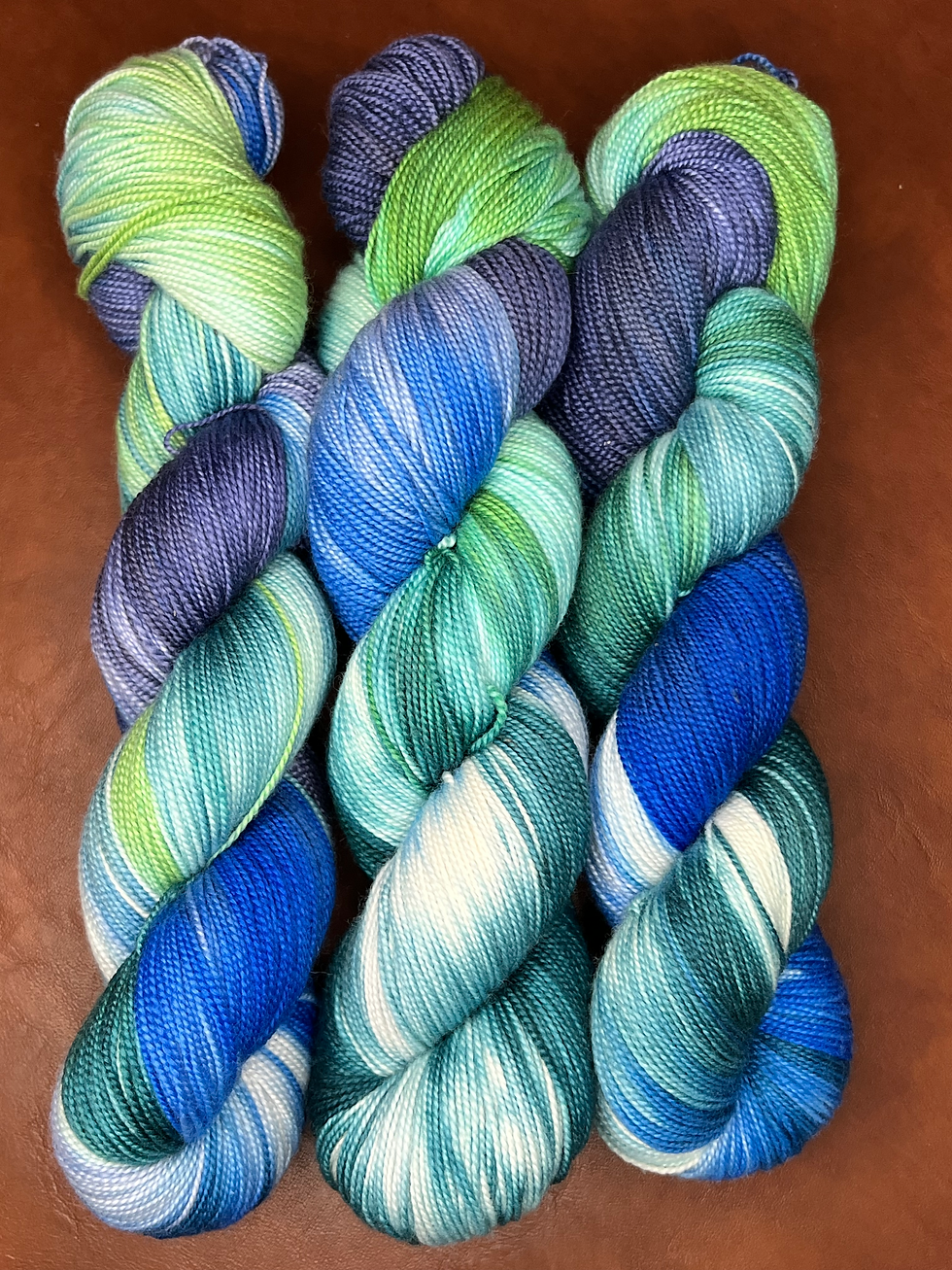Wool-Silk Socks: A Luxurious Alternative to Wool-Nylon Blends
- Roe Dubois
- Aug 19
- 2 min read
For decades, the reigning champion of hand-knit socks has been the wool-nylon blend. Wool brings bounce and warmth, while nylon lends strength and elasticity to endure long days of wear. But lately, a different pairing has been stepping into the spotlight: wool-silk blends. Smooth, lustrous, and steeped in history, silk is being rediscovered as a natural alternative to synthetic reinforcement.
So—are they comparable? Let’s explore.
The Traditional Standard:
Wool + Nylon
Nylon entered the knitting world in the mid-20th century and quickly became indispensable. A dash of nylon—often 20–25%—added durability, stretch, and resilience. For socks that needed to handle boots, sneakers, and repeated washings, this pairing was nearly unbeatable.
Pros of Wool-Nylon:
Excellent strength and abrasion resistance
Stretch and recovery keep socks snug
Affordable and widely available
Machine-washable options are common
Cons of Wool-Nylon:
Nylon is synthetic (not biodegradable)
Can feel less breathable compared to natural fibers
May pill over time
Less luxurious feel

The Elegant Contender: Wool + Silk
Before nylon, knitters often turned to silk for reinforcement—Victorian stocking knitters prized it for its shine and strength. Today, wool-silk blends are prized for luxury socks that balance performance with natural beauty.
Pros of Wool-Silk:
Silk adds tensile strength (though less spring than nylon)
Natural sheen and softness elevate the fabric
Breathable, temperature-regulating, and moisture-wicking
Biodegradable and renewable
Drapes beautifully—socks feel indulgent
Cons of Wool-Silk:
Less elastic than nylon (may slouch without ribbing or negative ease)
Less abrasion-resistant—heel/sole wear may appear sooner
More expensive than wool-nylon blends (Not here at Which Way Crafts!)
Best suited for gentler wear (house socks, special pairs, or with reinforced heels/toes)
So—Which Should You Choose?
If you want hardwearing everyday socks for hiking boots or long commutes, wool-nylon still reigns supreme. But if your heart longs for luxury, natural elegance, and a bit of history in every stitch, a wool-silk blend offers something nylon never can: a touch of quiet opulence.
And here’s a secret: you can always reinforce high-stress areas with a reinforcing thread (woolly nylon, mohair, or even silk thread) to get the best of both worlds.
Final Thought: Choosing between wool-nylon and wool-silk isn’t just about durability—it’s about intention. Do you want socks that are purely practical, or socks that feel like slipping your feet into a whispered luxury? Both have their place in a knitter’s travel case.








Comments